No roads connect the peninsula of Kamchatka in Russia’s far east with other parts of Russia’s Far East. So you call it a pretty isolated place. Only in the late 17th century did Russian explorers arrive. Why travel to such a remote place? First of alI, I love exactly such places, plus Kamchatka has a lot of offer: Bears big&small fishing bright red salmon and volcanoes, 160 of them, 29 are still active. I climbed three, Tolbachik, Mutnovsky, Gorely, lived a couple of days with reindeer herders and spent four days at Kuril Lake watching bears big and small catching salmons.
Flying into Petropavlovsk, the capital of Kamchatka, I was greeted by Avanchinksy Volcano and he also said good bye in a very special way, wrapped in a thick spiral cloud that left me stunned.
Petropavlovsk , the truly ugly capital of Kamchatka is a sight of its own. The local joke goes that during Soviet days graduating architects were sent here to practice. Most houses are run down and it is a really sad sight. In the hotel of the same name I met my three travel companions.
These were Michaela and Rene from Germany and Efra from Israel. Together with Sascha the guide, Sascha the driver and Sascha the cook we travelled for 18 days to very remote places on bumpy roads soaking up the incredible scenery of wild Kamchatka..
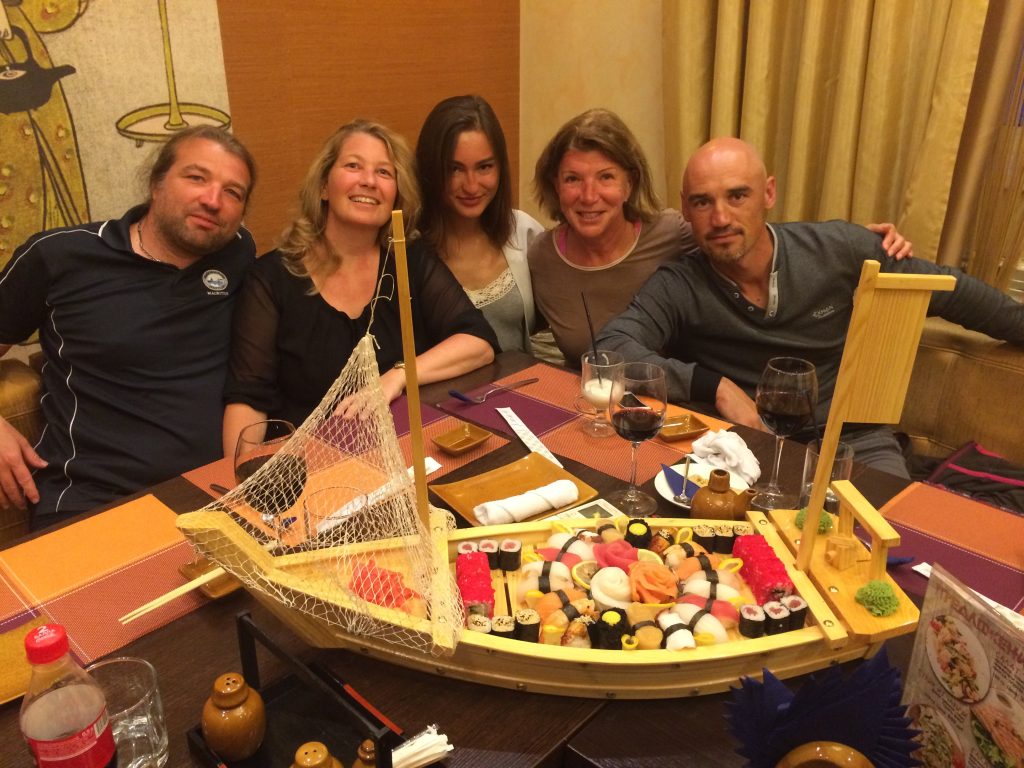
Rene and Michael from Germany, Sascha and X our translator at a Japanese Restaurant in Petropavlovsk
Tolbachik Volcano was our first challenge. The road was so bad that I got motion sick from being thrown around in the truck.
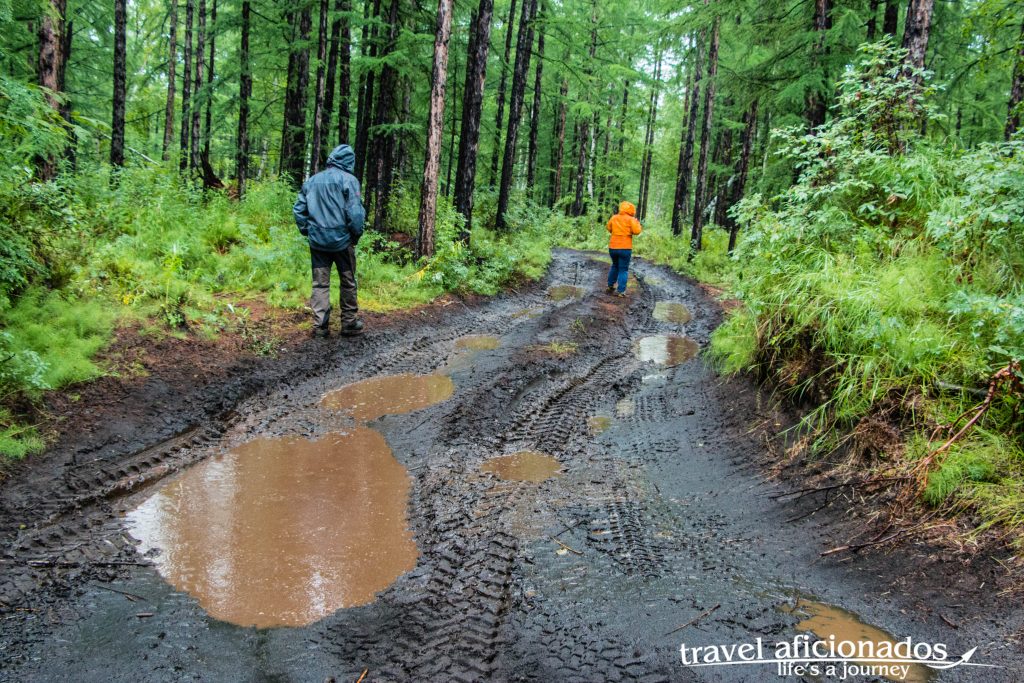
Road towards Tolbatchik, sometimes we walked before it wa a lot more comfortable than being thrown around in the truck
That horrid condition is mainly due to the fact that a massive eruption in 2012 blocked the track and now trucks basically are crawling around this blockage off road. The most epic eruption happened in July 1975, the activities lasted for an entire year and left a huge area covered with lava and volcanic ash.
The foggy weather prevented any serious climbing, which I was not too unhappy about it. So we walked along the endless lava stream, climbed up cones that were created by the eruption and marveled at this scenery from another planet.
Sascha entertained us with incredible tricks, he created sizzling steam fountains by pouring water into cracks and even managed to make a fire by sticking dry twigs in them them. When Rene threw small pieces of rocks into the fire, the minerals trapped in the rock made the flames appear in all different colors, what a sight.
The wet weather made our nights in the tents rather adventurous, one night a storm was rocking the tents and no sleep was possible. Naturally those are the nights when you need to go to the outhouse far across the campsite. Luckily we could seek shelter in the little hut during meal times, a Russian group shared it with us and they cooked up the storm every day, dished out incredible food. But most campers had nowhere to hide and I often watched though the window and felt so sorry for them.
In bright sunshine we hiked to the Dead Forest, an area completely covered by black lava sand, and dead trees buried half way in the sand. It was an out-of this world feeling, marching through black sand, with skeletons of trees sticking out and the snow-capped volcanoes as a backdrop – unforgettable.
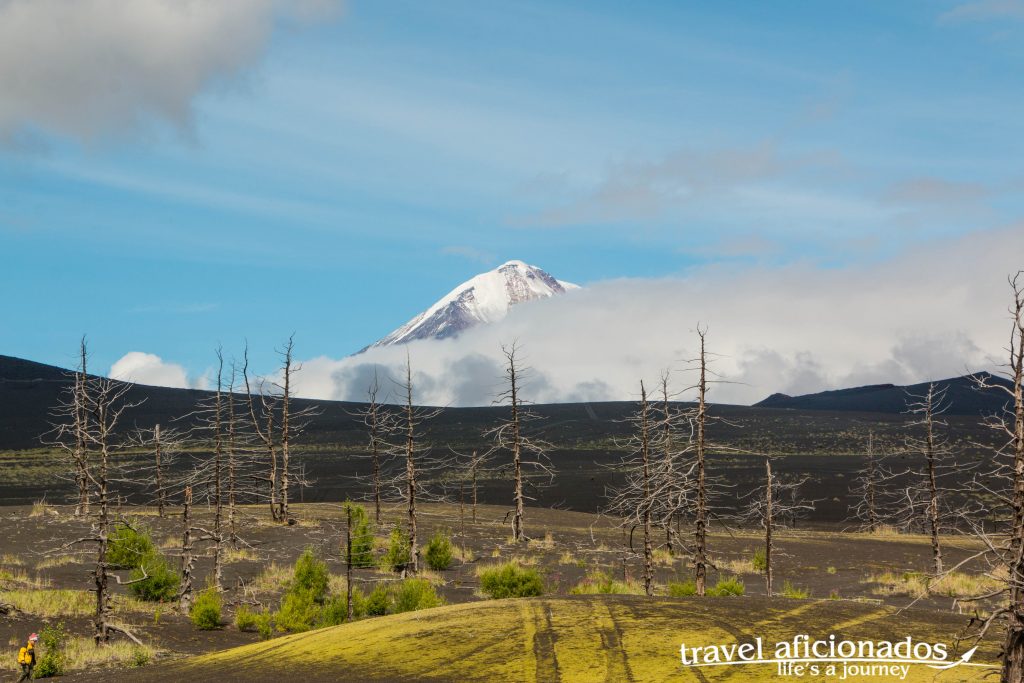
Dead Forest, after the eruption, meters of volcanic sand covered everything, what you see are the tops of the trees
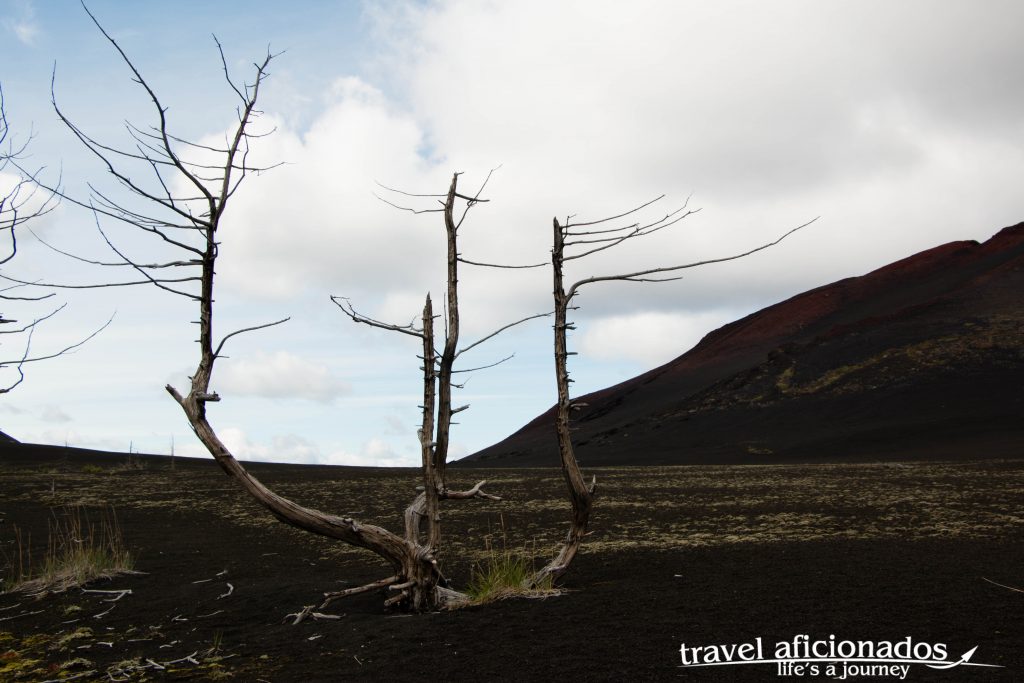
Dead Forest, after the eruption, meters of volcanic sand covered everything, what you see are the tops of the trees
The little village of Kozyrevsk was where we started that four-day trip to Tolbachtik and where it ended. We stayed in cute little wooden chalets surrounded by the most beautiful garden. Especially when returning from Tolbatchik we were happy to have a roof over our head, although it was still really cold. Sascha filled some hot water in a plastic bottle that kept me warm. On our first day there I got lost during a stroll through the village and head no clue where to go, finally a women noticed my wandering around in despair and despite we had no common language and did not know the name of my host family she took me to the right house.
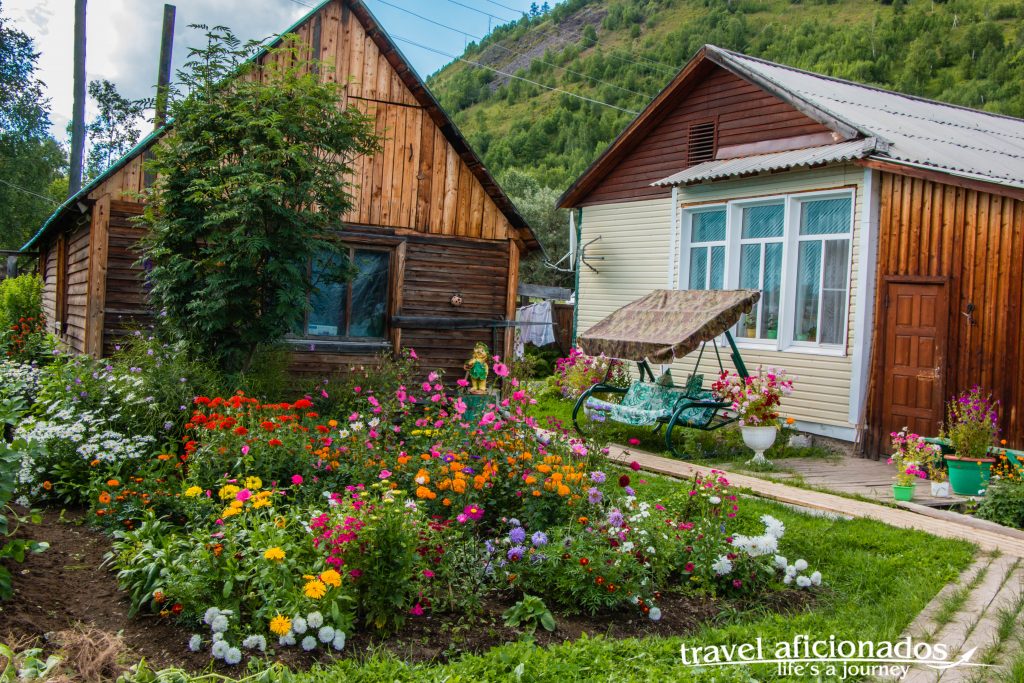 gorgeous houses in the village of Kozyrevsk
gorgeous houses in the village of Kozyrevsk
From Kozyrevsk we coninued to Esso, a village, 520km north of Petropavlovsk, on the picturesque confluence of the river Bystraya and the river Uksichan, which never freezes.
A local museum is an excellent source of information about the life and culture of the Koryak people that live in that area.
One evening we went out to a village where a group of dancers performed for us, just for us. Even though there were only three of us they gave everything as if 100.000 people were watching. The village also has a huge public pool fed by hot springs which we had to check out.
Staying with Reindeer Nomads
From Esso a 30 minutes flight by helicopter took us to the camp of reindeer herders, nomads who live in the wilderness with their herd all year. Their families have moved to villages and once in a while they visit. Their big tent was next to a scenic river that runs through a super green valley bordered by mountains and snowcapped volcanoes. On the first day there I watched them slaughter a reindeer.
The herders first moved around the herd, picked one, dragged it away from the other animals with a lasso and cut its throat.
Only a tiny knife was used to separate the fur from the muscles and take out the organs. It was tough to watch, looking in the still open eyes of this cute animal, while the guy stirred through a pool of blood inside the bowels.
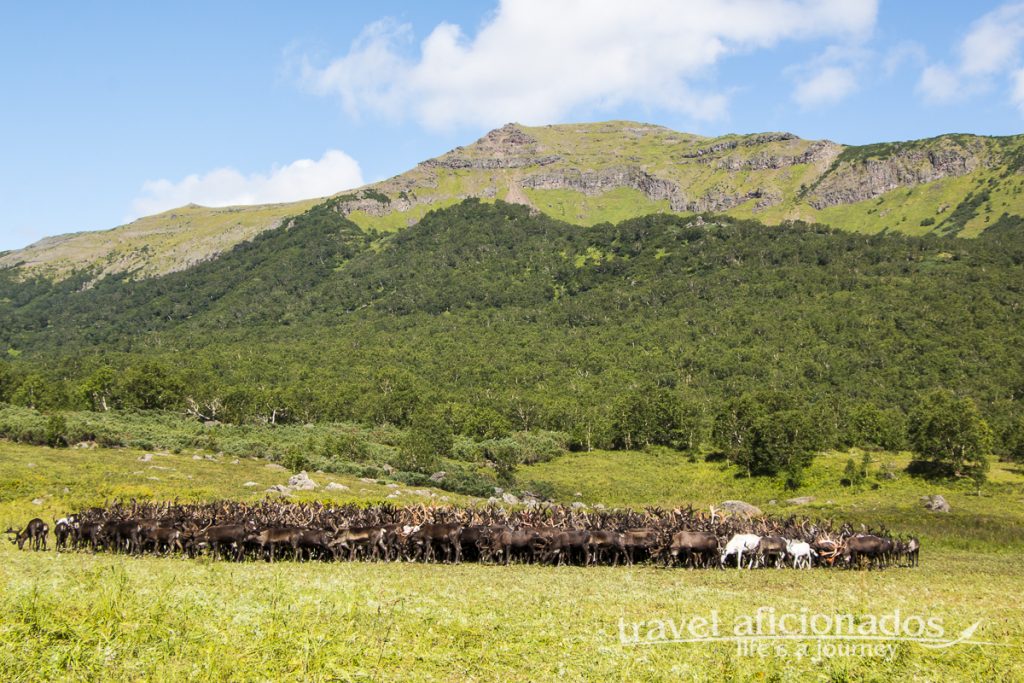
reindeers stick together and move in a circle
We were not allowed to walk too far since bears are never far in Kamchatka, but we took a short stroll along the river and picked blueberries. After a dinner- chewy reindeer meat – which Sascha prepared in a tiny tent kitchen we joined the herders around an open fire in their tent.
Of the many anecdotes they shared with us I remember those two: the older man of the four talked about his time in the Russian Army and he pulled out a Kalashnikov from behind and handed it to me. The reason was me asking how he protects the reindeer and himself from.
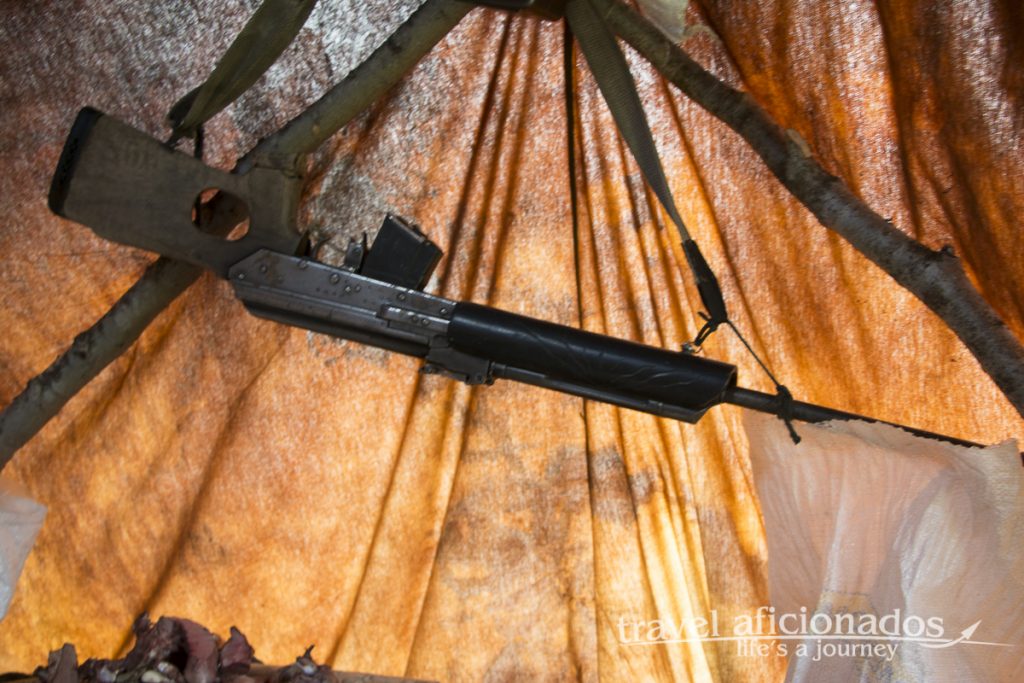
Inside the tent of reindeer herder, a Kalashnikov is always around just in case
Back in Petropavlovsk we enjoyed the comfort of our cozy hotel and undertook an excursion around Avachinskaya Bay. We did some fishing on the boat the enjoyed our catch straight away at lunch.
The weather was not that great and we saw no wild life but it was shocking to see the run down harbor and the rusty boats. Obviously the Russian Pacific Fleet also has a base there, which of course was out of sight, but I wondered what condition these boats were in.
Mutnovsky & Gorely Volcano
Mutnovsky was my absolute favorite of the three volcanoes I climbed. The three-hour climb to the caldera was like walking through a mystical unreal world. Fumaroles were spewing hot steam into the air, a constant hissing filled the air, mud pool were bubbling and the high cliffs were glittering in all different color. The last bit of the trek we had to pull ourselves up on a rope to look down into the crater. The smell of sulphur, steam escaping from cracks in the rock gave me the feel of being in Mordoorland.
Mutnosvsky base camp was quite basic, like during our stay at the foot of Tolbatchik I shared a small tent with Efra, meals we prepared in a tiny container where Sascha cooked and we sat down for meals.
On our way to Gorely Volcano we drove into the most spectacular rainbow ever, a perfect photo op. Even Sascha the driver, who has seen it all, was excited,.
Climbing Gorely Volcano took about two-three hours and we did it really fast, at least for my standards. At the summit the fog was so thick we did not see anything, we could not believe that all this hard work was for nothing. Suddenly Sascha screamed in delight, the fog lifted and below we could see the green blue crater lake. It was like magic. The scenery was equally breathtaking, within a 250 degree angle a string of snow capped volcanoes appeared in the distance, with the clouds moving in between. Awesome.
Our last leg of the trip was the most comfortable and emotional one, watching Kamchatka bears feeding on salmon on Kuril Lake. Link



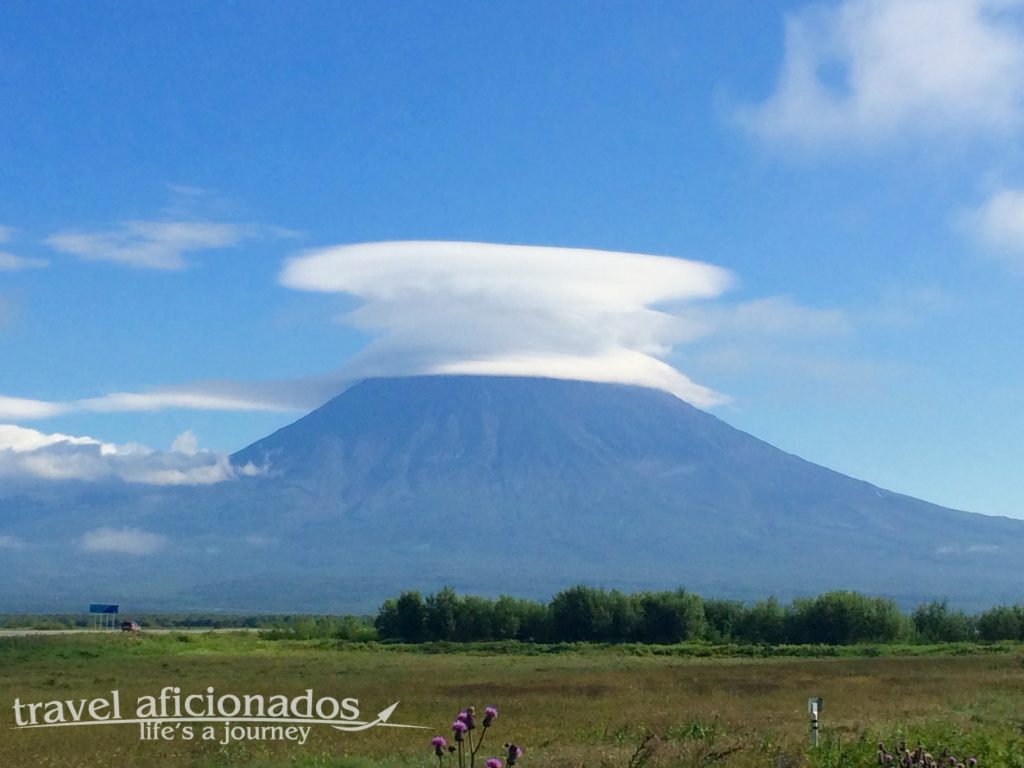
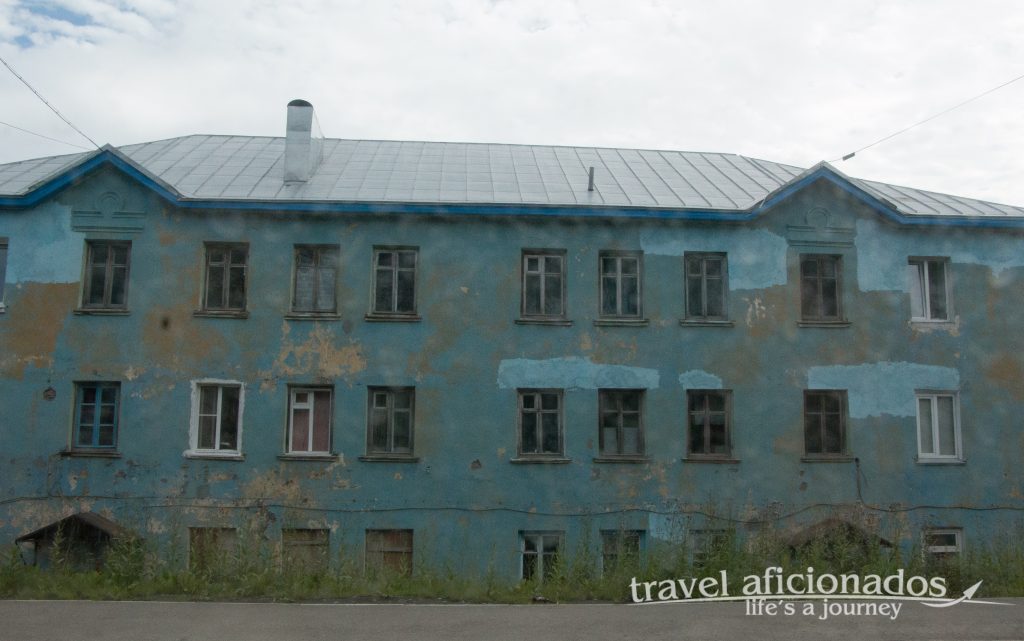
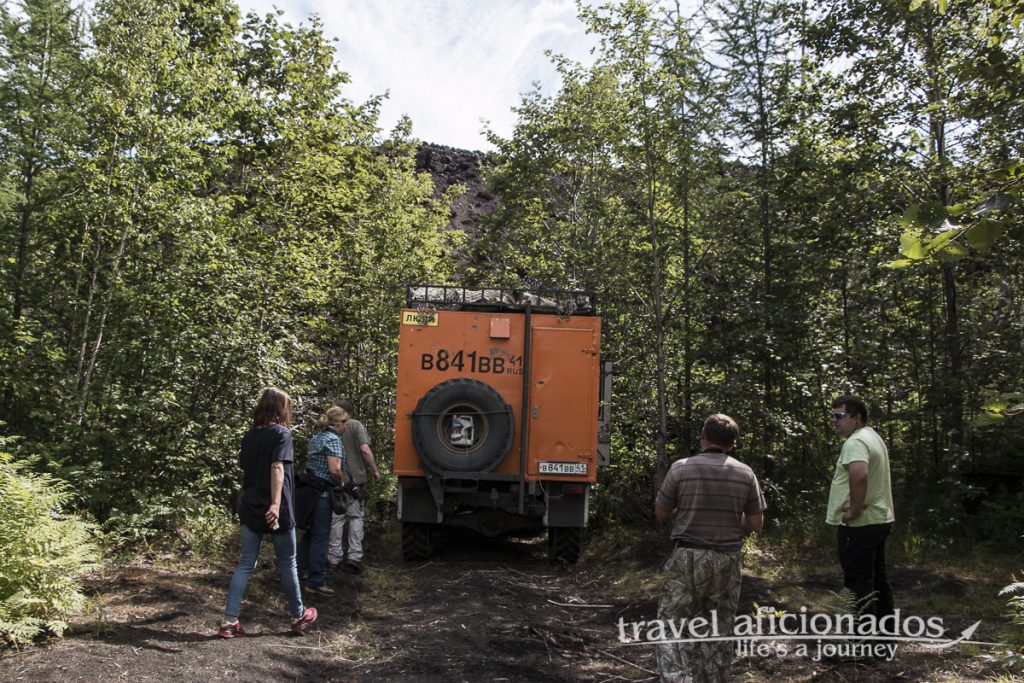
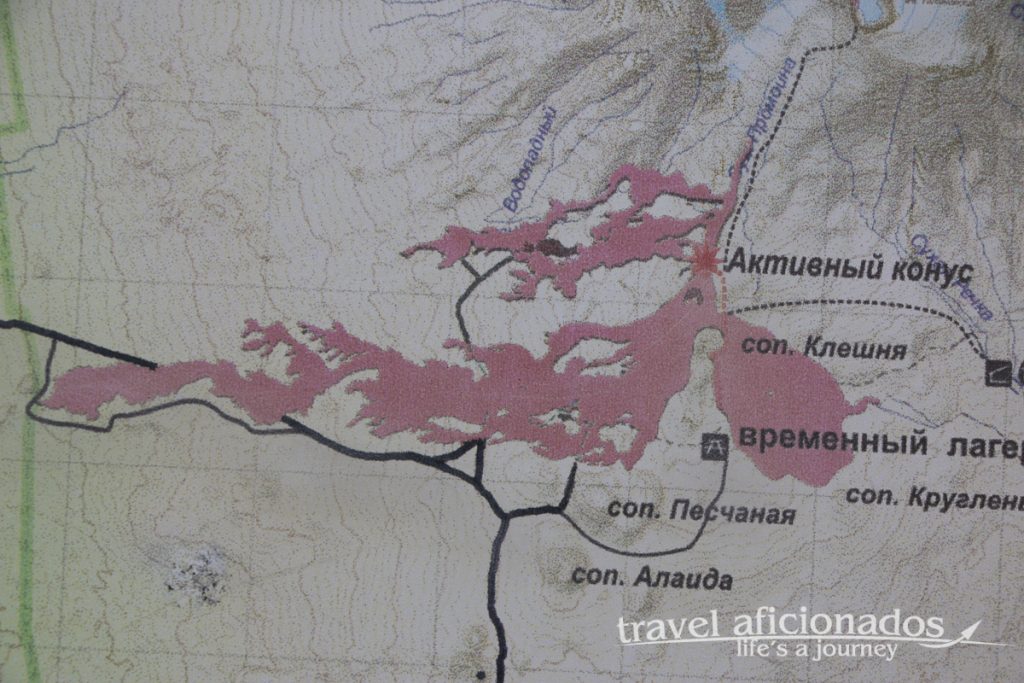
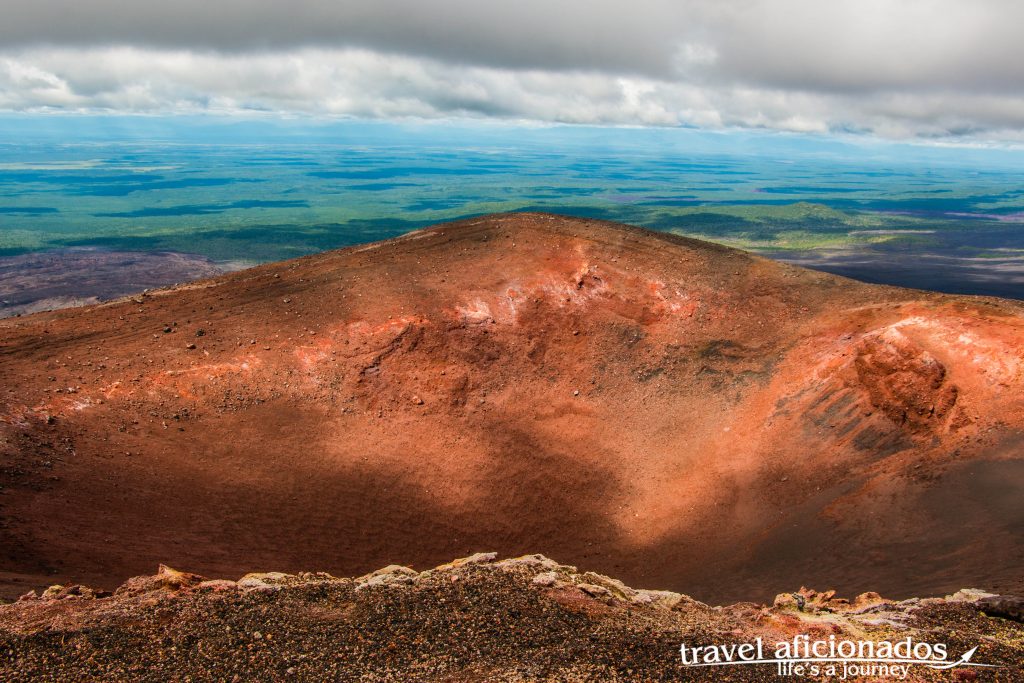
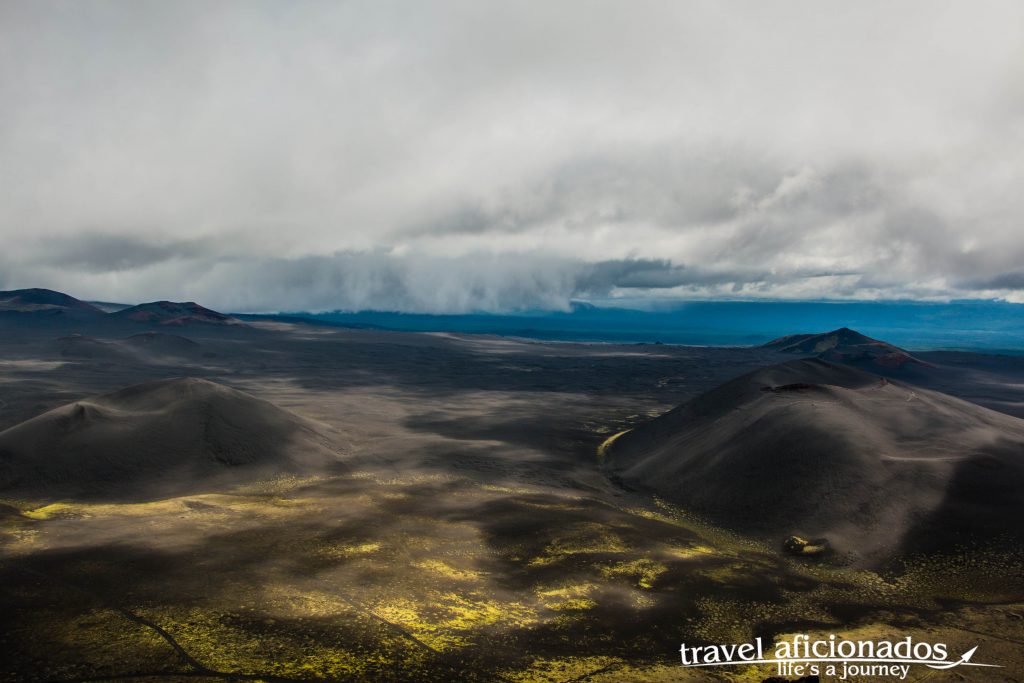
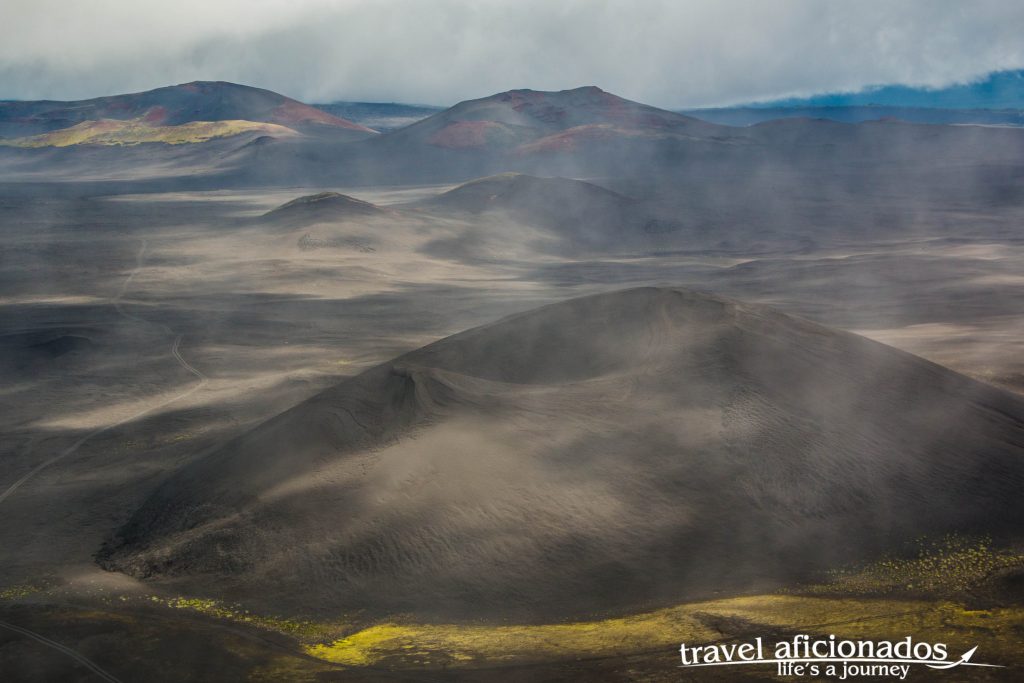

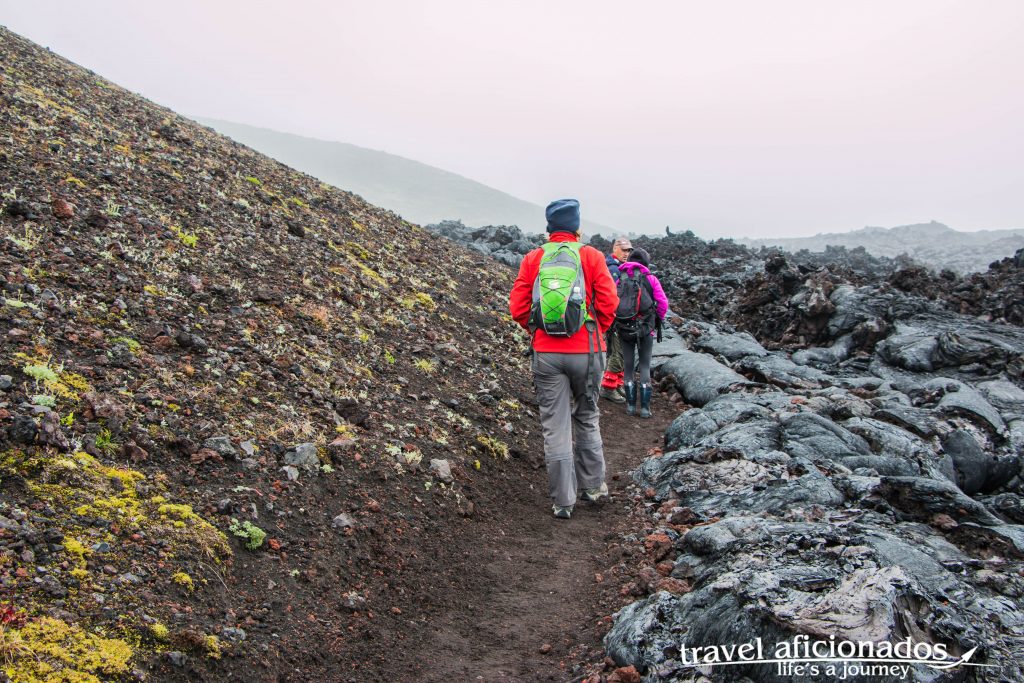
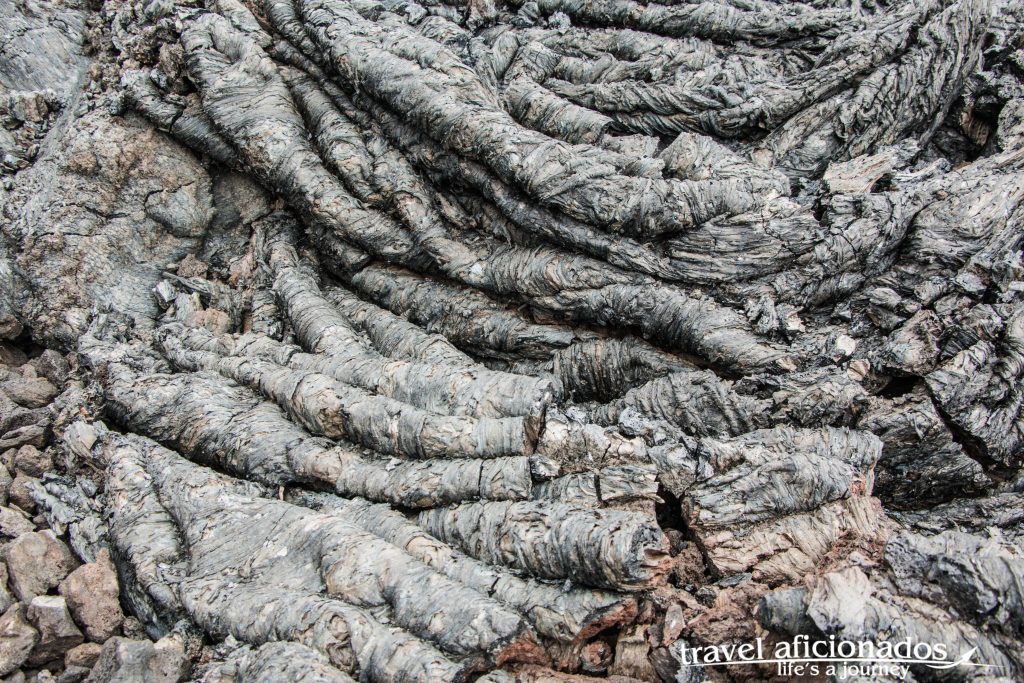
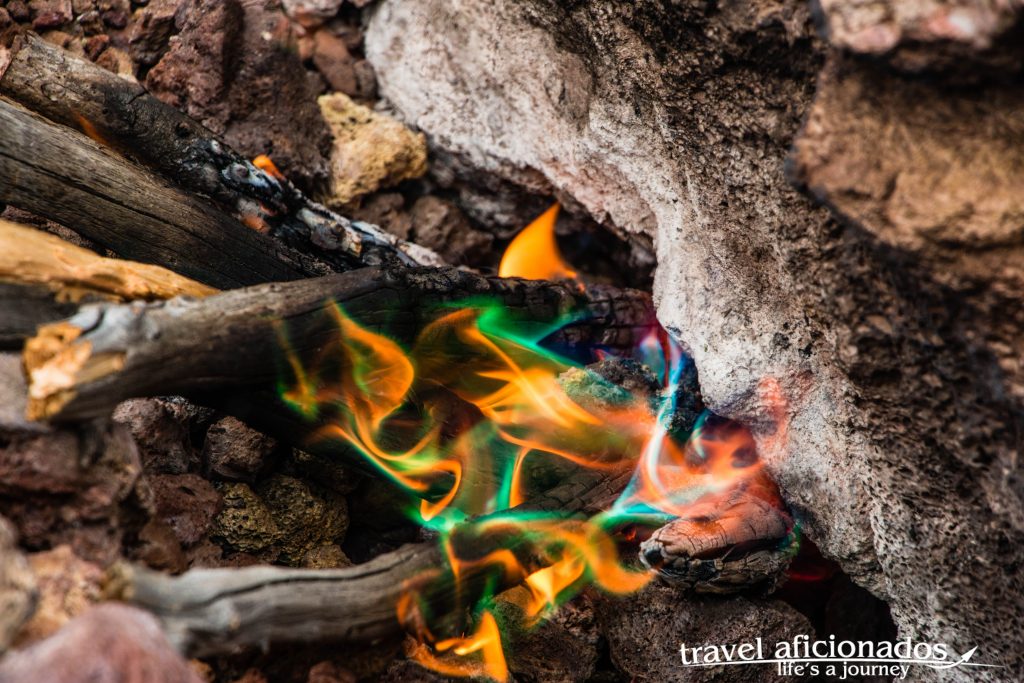
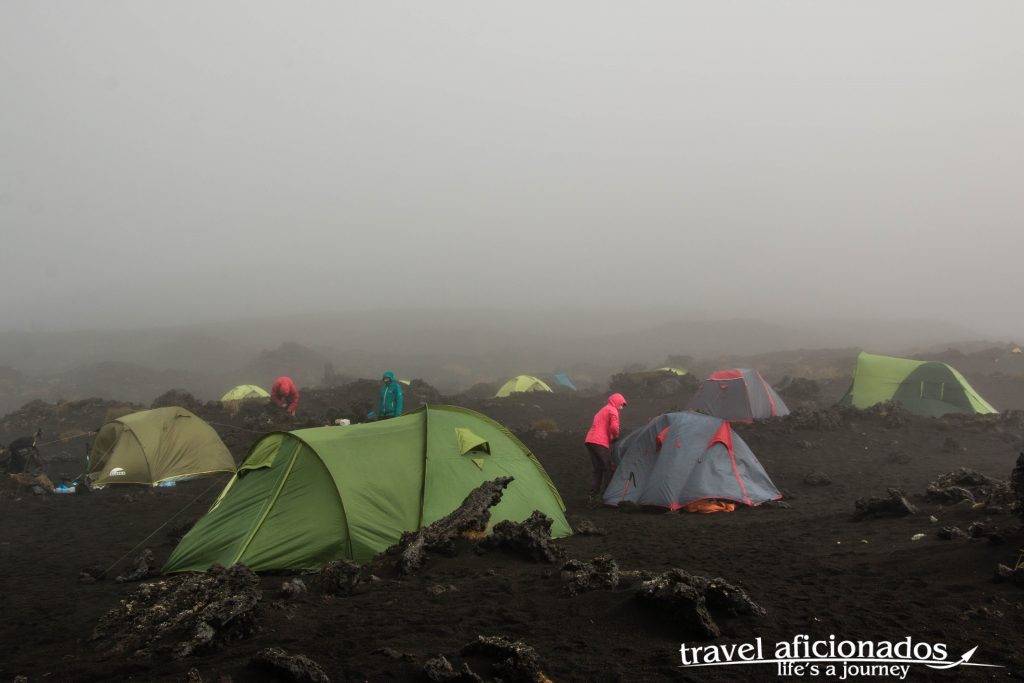
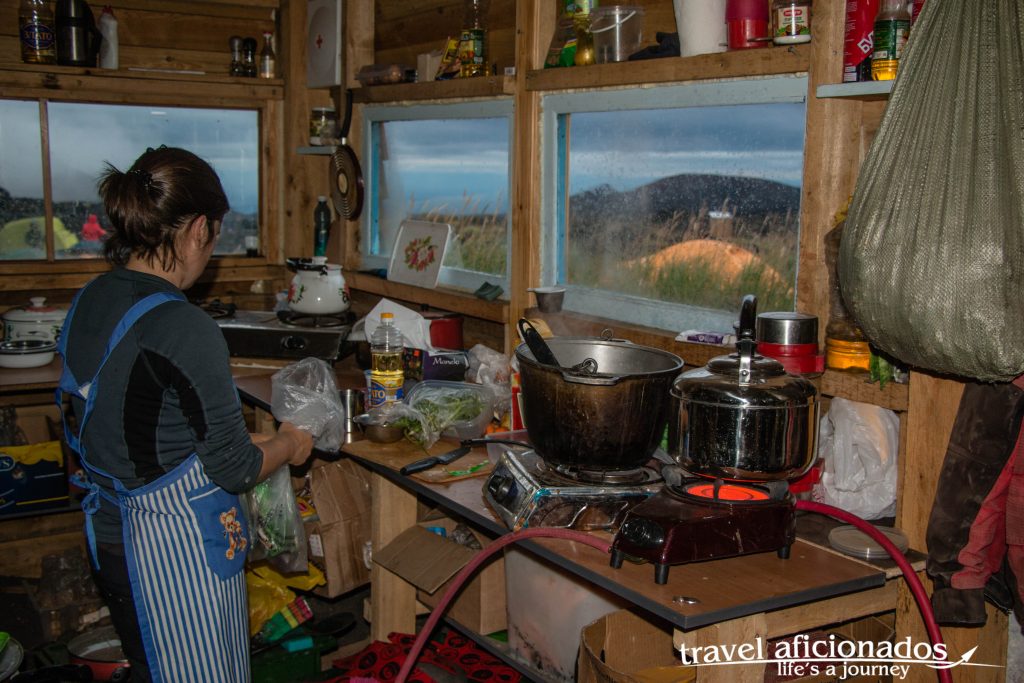
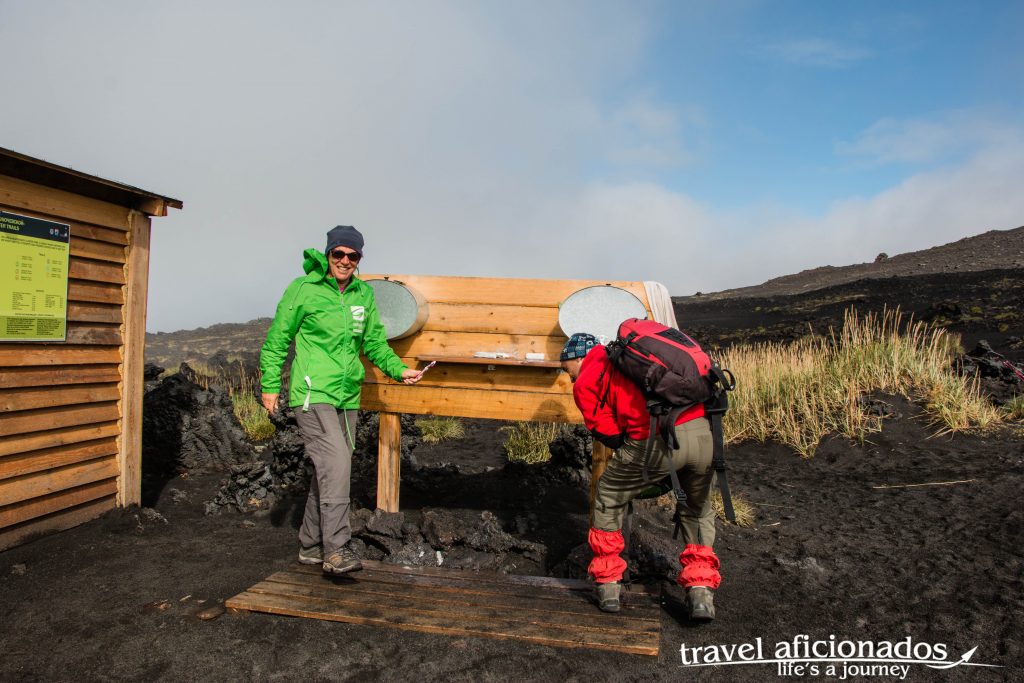

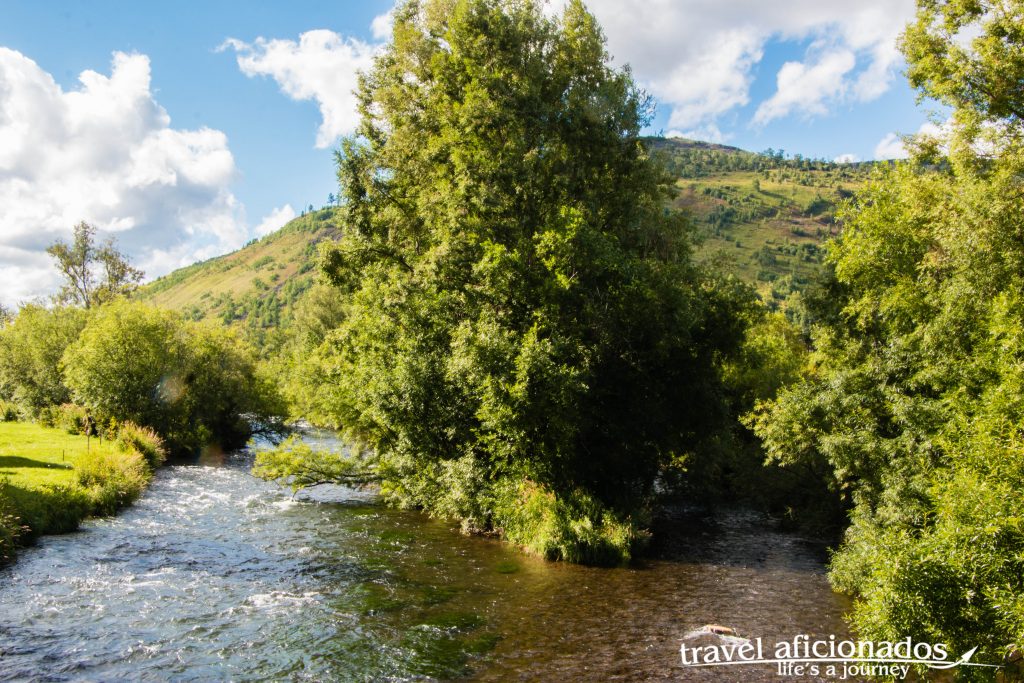
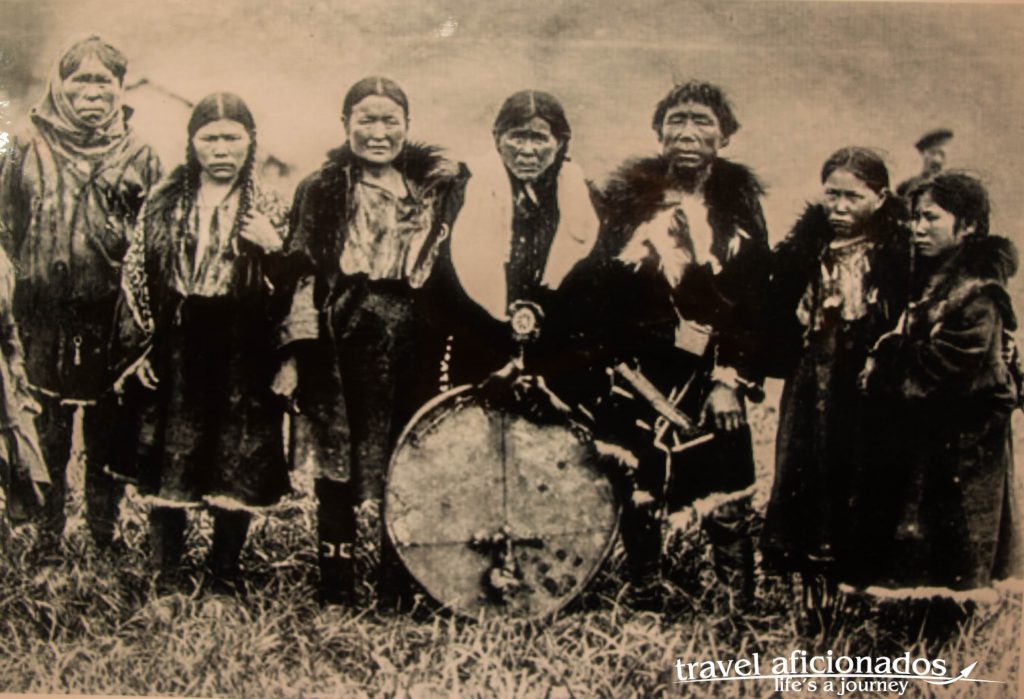
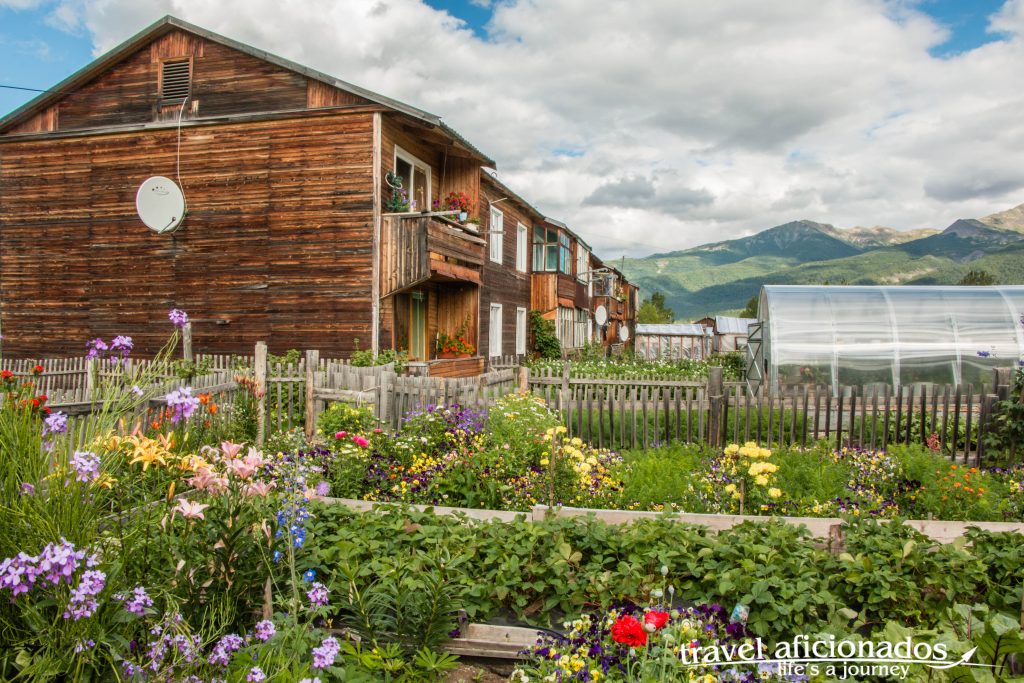
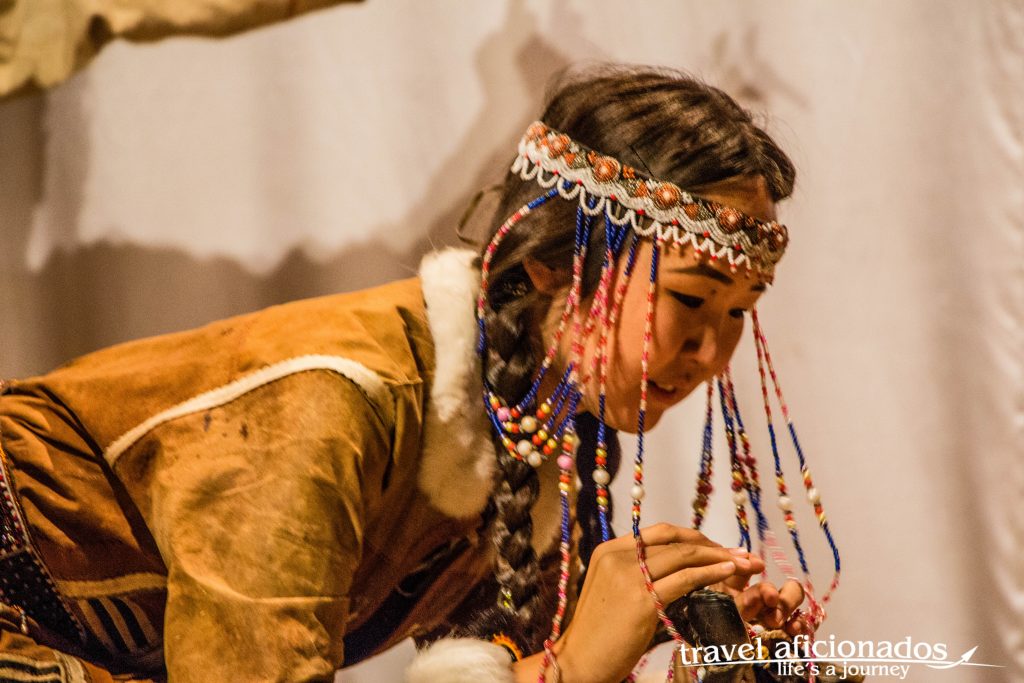
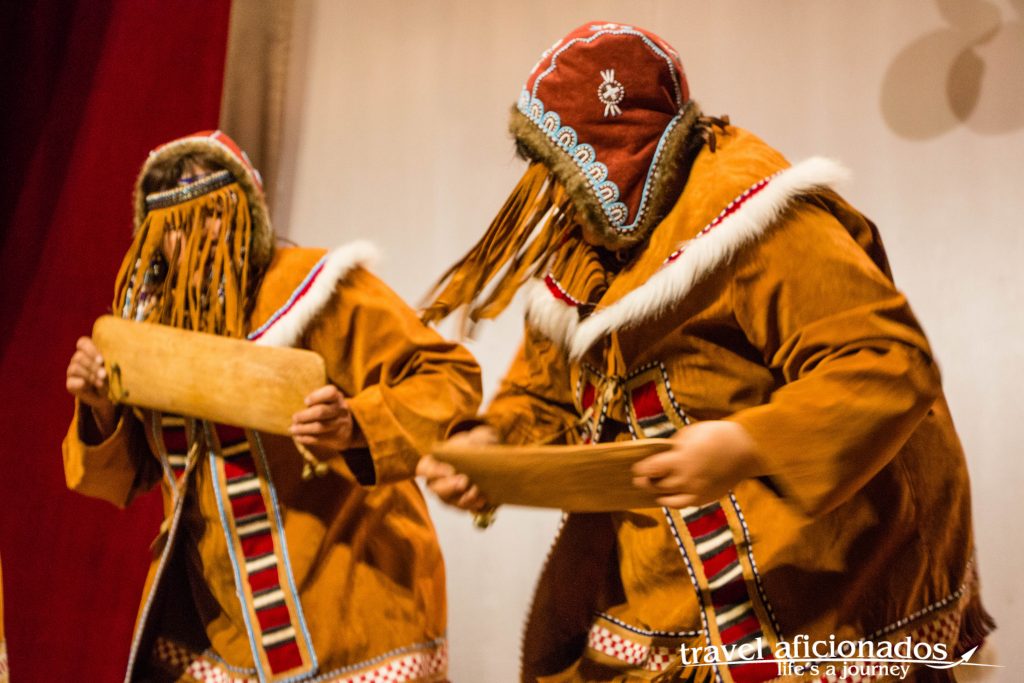
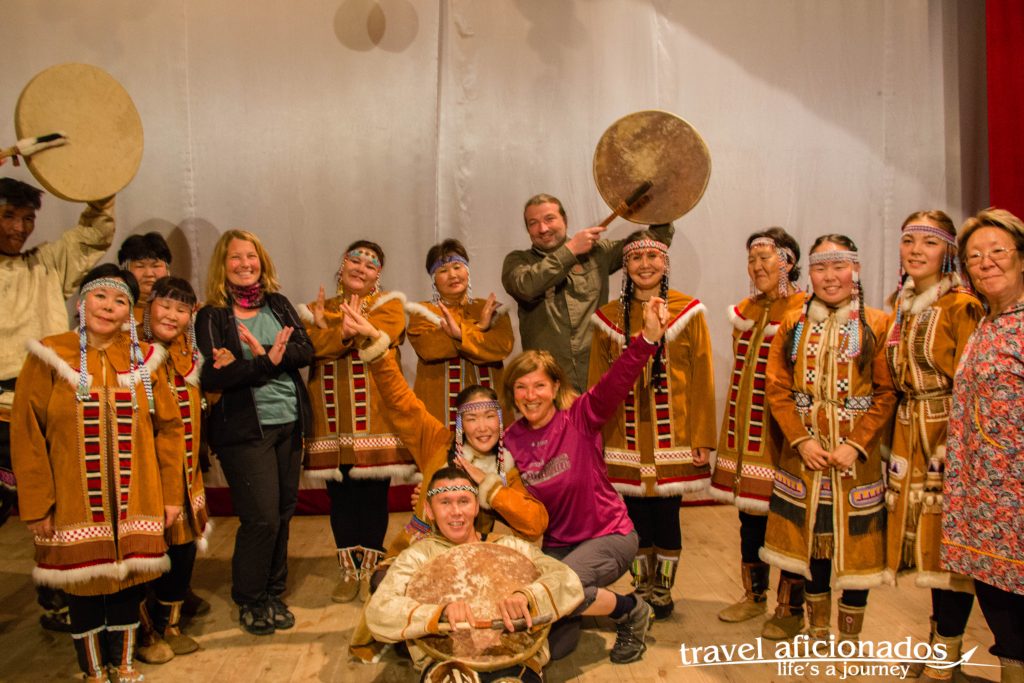
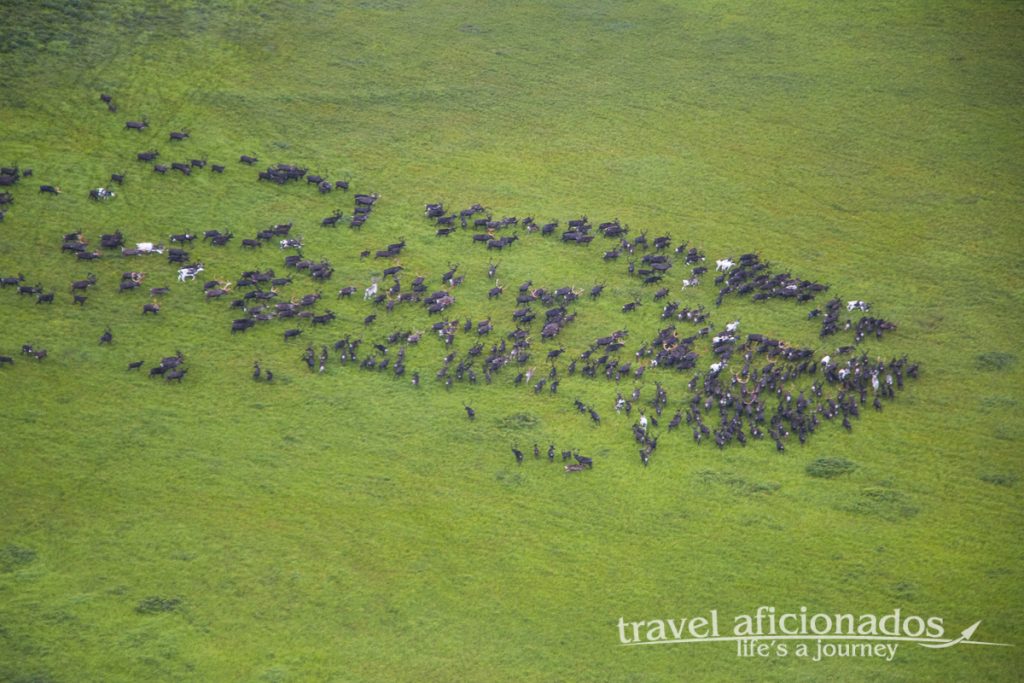
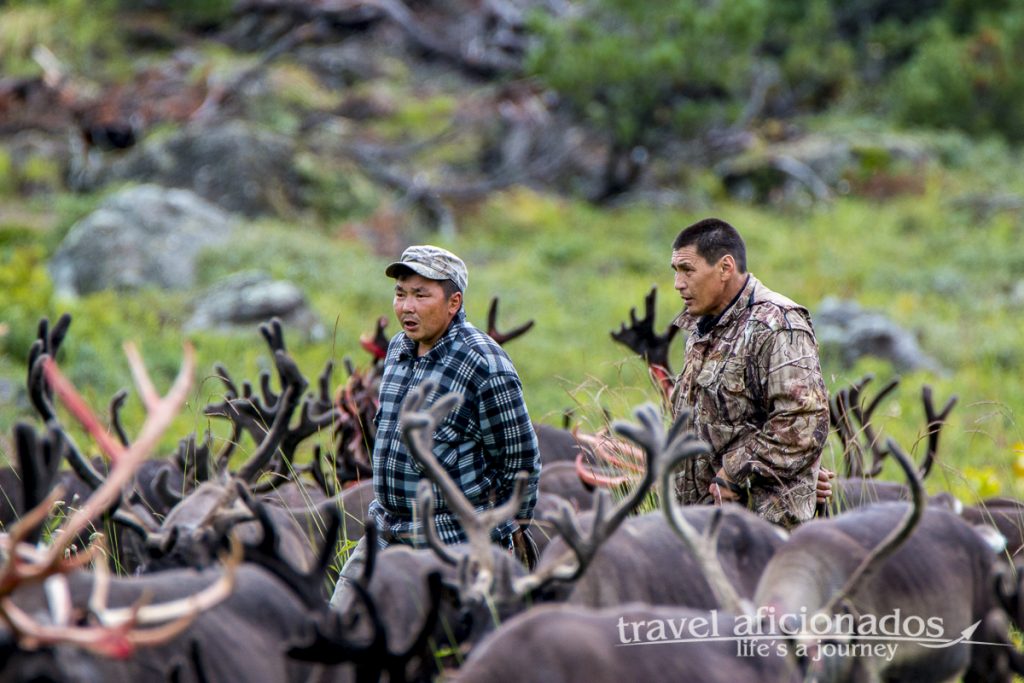
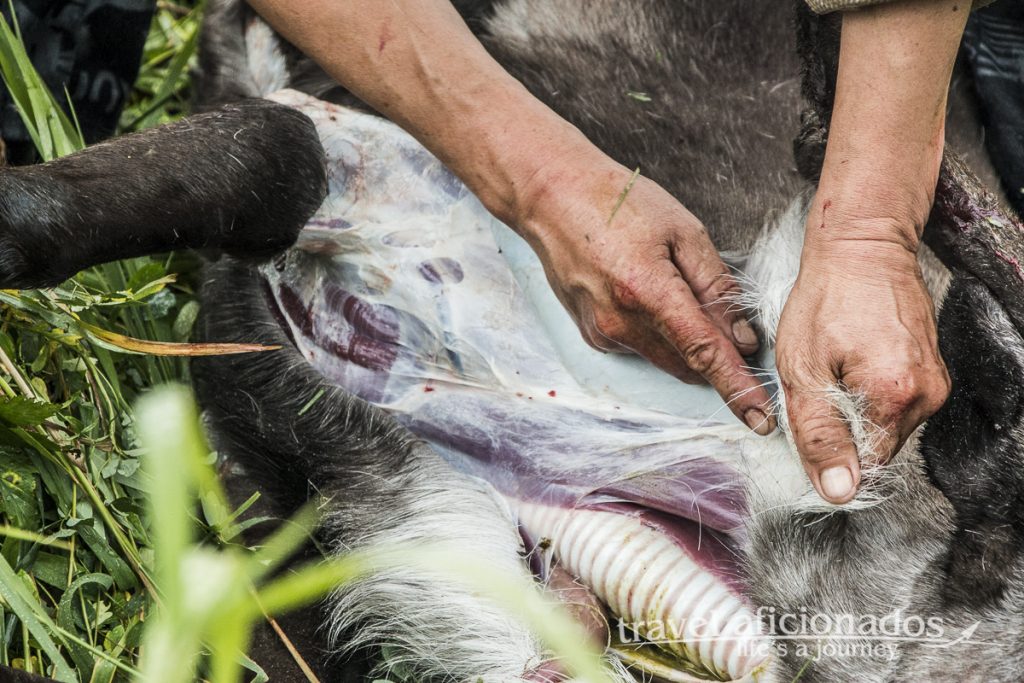
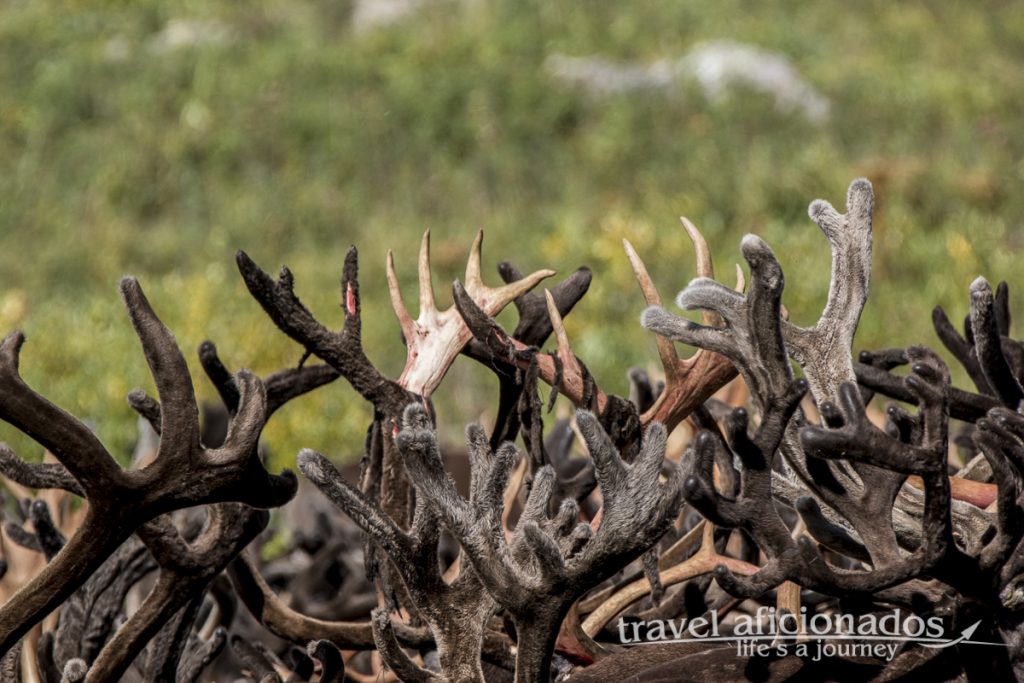
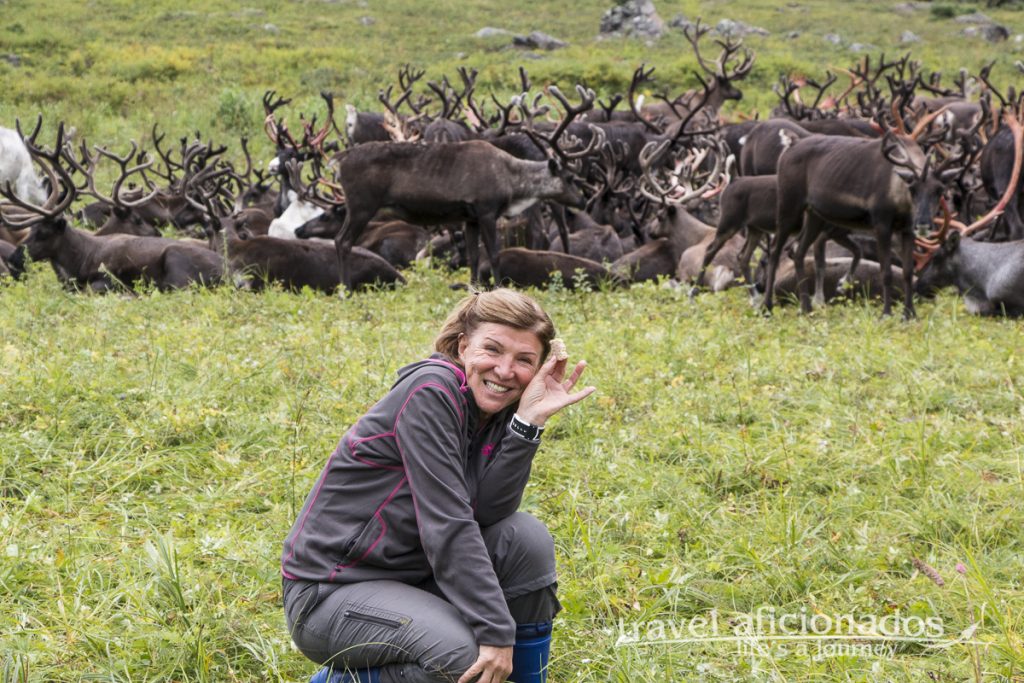
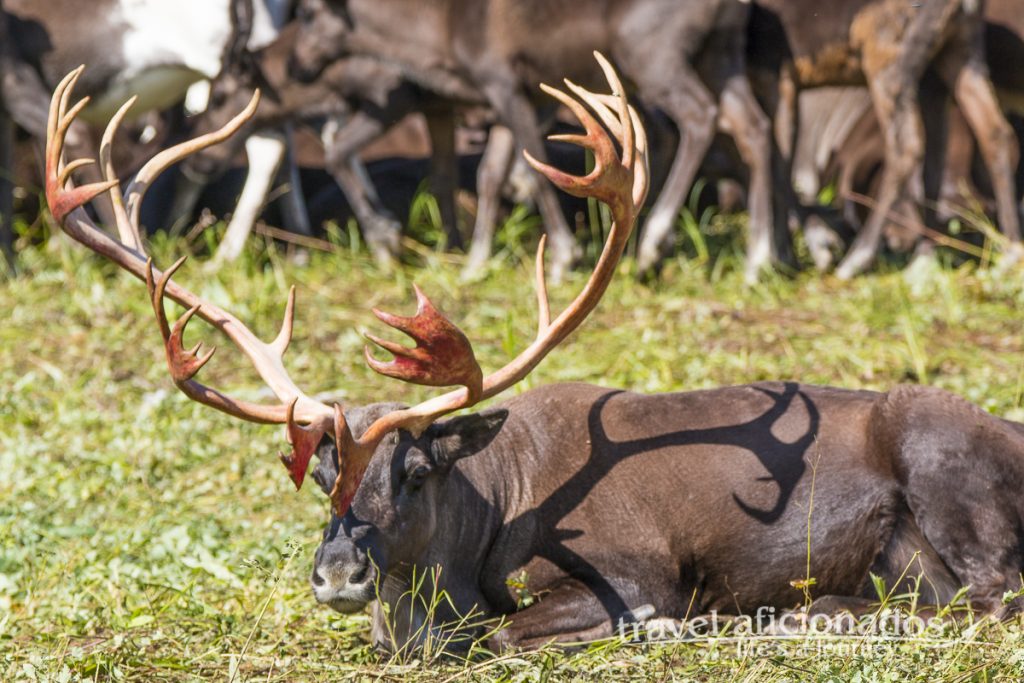
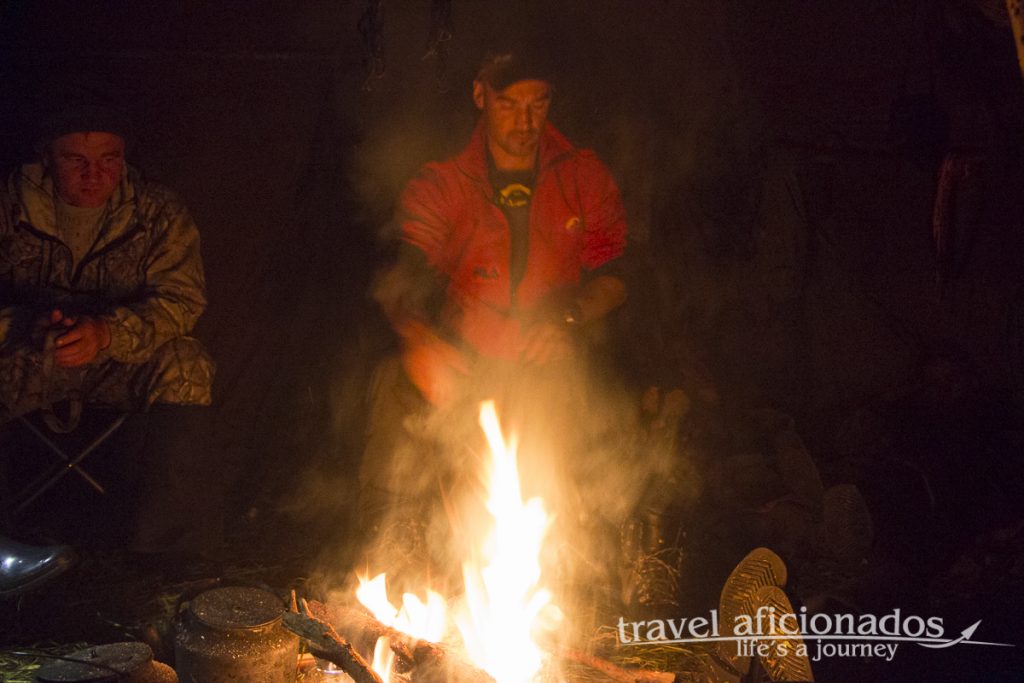
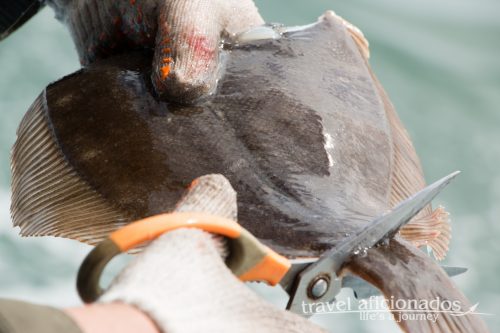
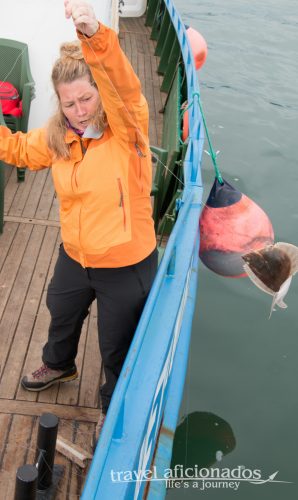
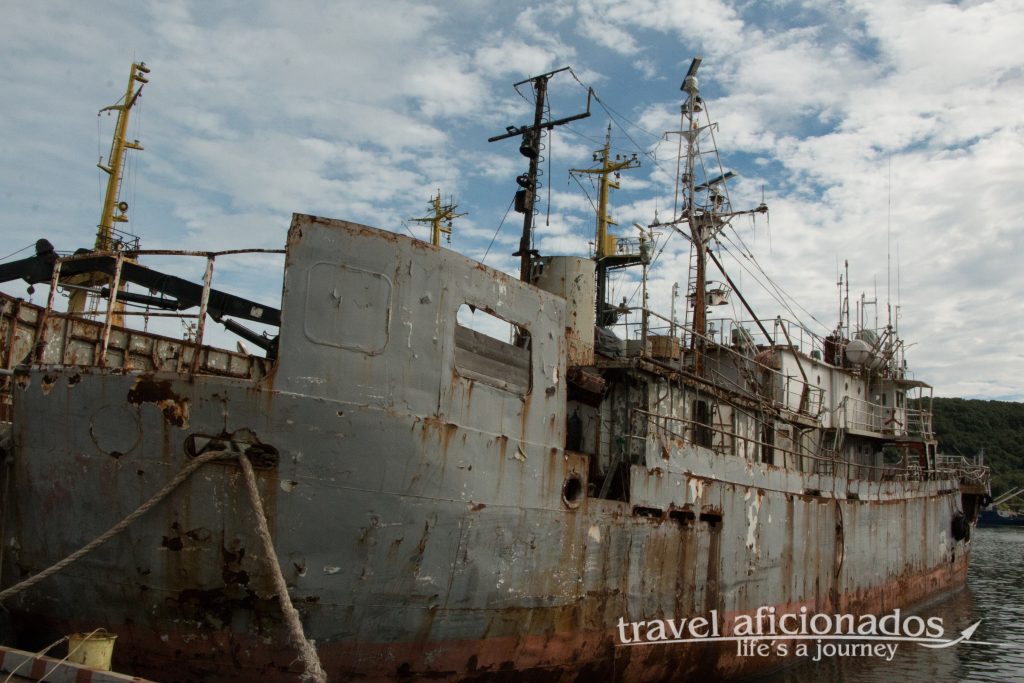
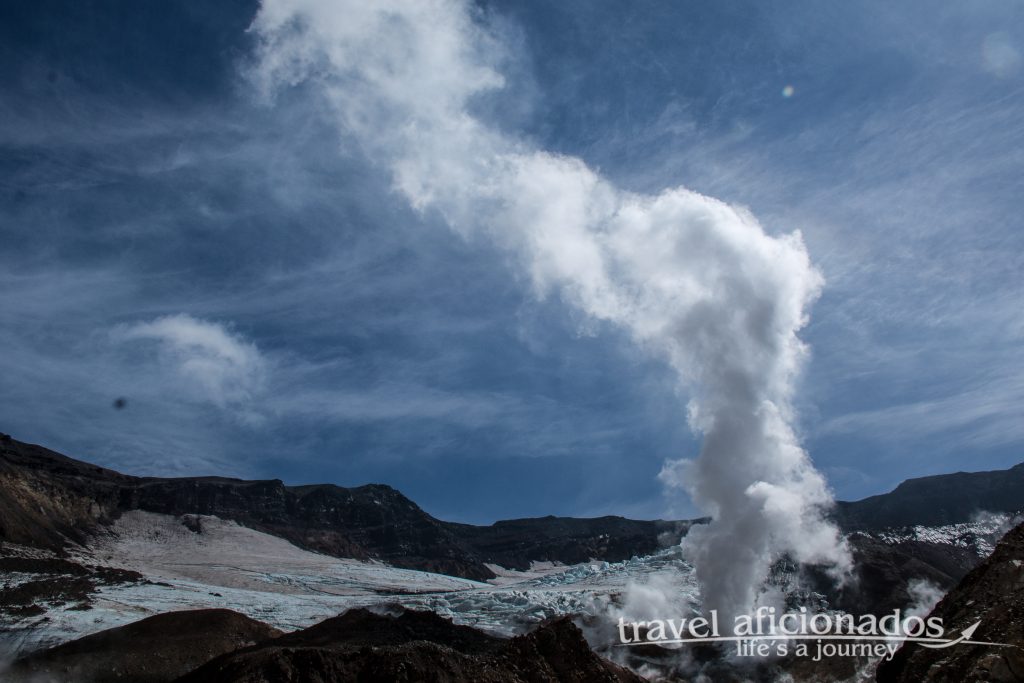
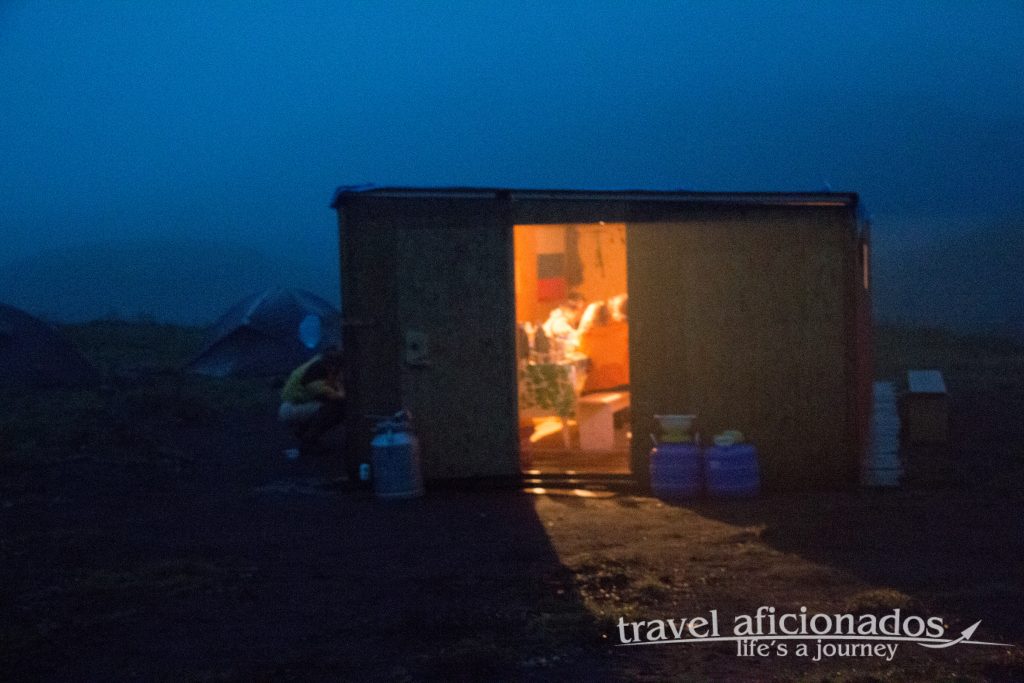

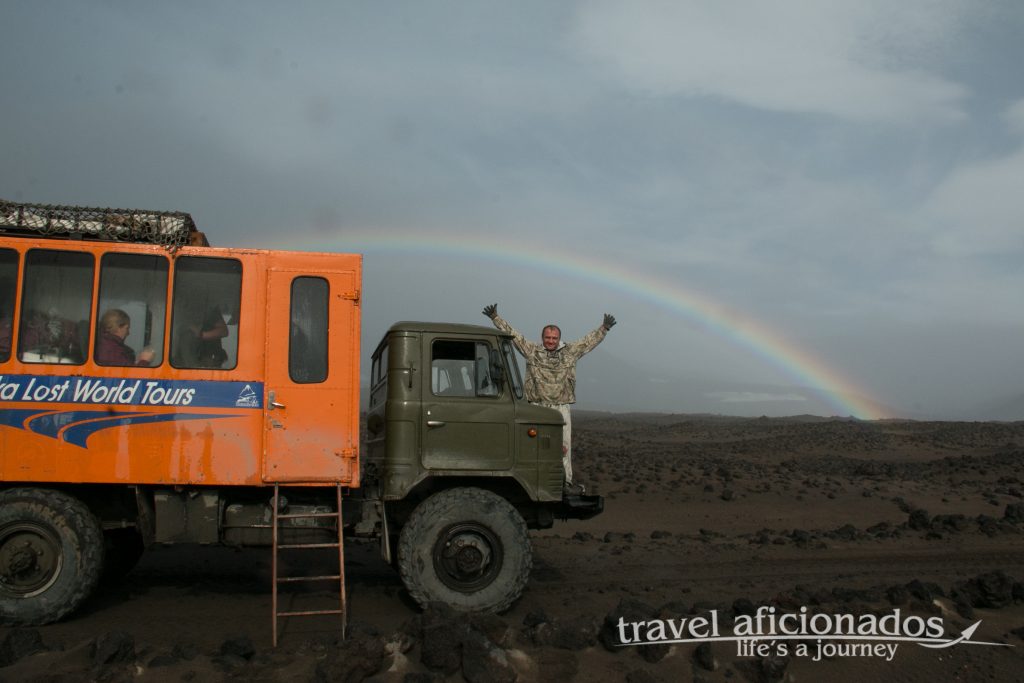
No comments yet.